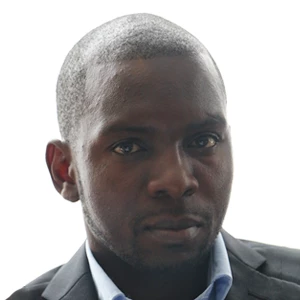
In December 2021, I was asked to teach a practical data science course at the African Institute for Mathematical Sciences (AIMS) in Rwanda, a pan-African network of centers of excellence for post-graduate training, research, and public engagement in mathematical sciences.
An old degree program with a new data science stream
The course I was asked to teach, titled Big Data Analytics with Python, would be one of the courses within the newly introduced data science stream for the Master of Science in Mathematical Sciences program that AIMS has traditionally run. I was truly excited about the prospect of contributing to this academic program, since my team at the World Bank’s Development Data Group, sees data literacy as a core objective and key to our work. I collaborated with the institute on several initiatives on capacity building in big data, data science, and related technologies in the past. For example, in 2019, through AIMS big data initiative, we delivered a big data short course in three African countries, and we shared our experience in this blog post. However, this time was different because the course would be part of a degree program.
Practice (with big data) makes perfect
The course’s goal was to introduce students to the nuts and bolts of working with large-scale datasets and familiarize them with appropriate techniques and frameworks for using big data, such as Apache Spark. As per the academic directors’ request, the course needed to be very practical as opposed to most of the courses at the institute that are theory-oriented. In order to achieve this, the approach in the course was to provide minimal conceptual background to a topic and quickly jump into the practical side of things, showing students not just mock examples, but also letting them peek into the real-world data science problems through the work that I do.
“I have always been curious about big data as a biostatistician. The course definitely did help in putting a lot of things into perspective. Especially the main issue of data collection and how to work with big data. Understanding how to work with big data such as knowing when to work with chunks of a large data set, whether to use an online data storage system such as Hadoop and how to analyse such data really is something I am going to use in my career path.
I am grateful for having taken the class and especially having Dr Dunstan take me through webscrapping which was crucial in my presentation that was done towards the end of the course.“
Barbrah Phoebe,
Student
Enthusiasm hampered by technology
The best part about the experience is that despite this program being very intense, the students were engaged and showed deep interest in the subject in and outside the classroom. For instance, students asked a lot of questions about data science as a career, what research topics to pursue for their master thesis, how to prepare for a career in data science, and more. There was no shortage of technical topics to discuss with the students and opportunities for me to inspire them to work hard and become world-class data scientists. Despite this zeal from the students, there were some predictable challenges related to information technology (IT). For one, the desktop computers which students use for practical work have 16 GB RAM of memory, which is hardly enough for working with large-scale (2TB+) datasets. These technology limitations were a source of frustration for both the students and me, as the students could not fully appreciate some of the things. This flags the need for appropriate IT equipment necessary for handling big data.
Despite these challenges, the experience I had with the students was extremely rewarding, mostly because of how enthusiastic the students were to learn data science. However, despite this enthusiasm, these young minds need a lot of support to kickstart their careers in the real world where work experience is demanded. This support could come in the form of mentorship from seasoned data scientists. Since Africa has a short supply of data science talent, global big tech companies could support AIMS. For example, although Google and Facebook have partnered with AIMS to offer training through the African Masters of Machine Intelligence (AMMI) program, they could extend this partnership to include facilitated internship opportunities for the students who graduate from this program and other AIMS programs. Similarly, other big tech players could also play a role in facilitating internships for these students who are at a disadvantage to compete with their counterparts in the developed regions due to lack of proximity from the places where these companies operate but also unprivileged backgrounds.
What can be done?
The infrastructure and network setup by AIMS already work very well by leveraging global experts to bring world-class post-graduate level Mathematical science education at no cost to the best young minds in Africa. For example, in the 2021-2022 program, I was among a group of professors who came from elite institutions such as the University of Cambridge, the University of Cape Town, Rochester Institute of Technology, Michigan State University, and other places. Furthermore, the introduction of the data science stream is a step in the right direction to ensure that some of the graduates focus on this new cutting-edge discipline. As a result of this experience, I am on the lookout for private firms willing to donate cloud computing resources to data science students in Africa. My goal is that when I go back, the technology can meet their aspirations.


Join the Conversation